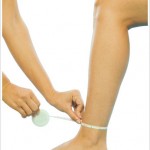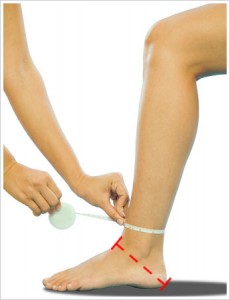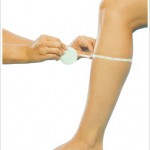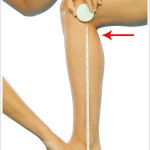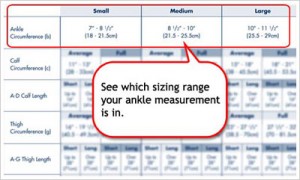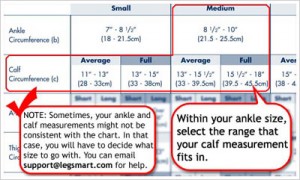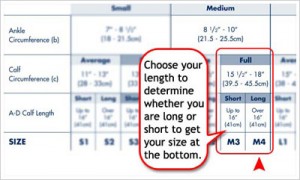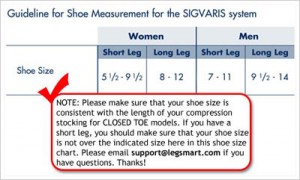Ask Mike
Q;- I just had a couple of running questions.
First of all, what are your thoughts on Nike running shoes? They are what I have now, but I get the feeling they do not offer a lot of support! What other shoes do you recommend? Would you suggest I go to the running room to see what they think is best?
Secondly, I don’t do a whole lot of stretching, and I have a feeling this is going to catch up with me eventually! What kind of stretching do you do, whether it be before or after a run?
A – 1. Running shoes are a very personal thing. What shoe gives one person tons of support falls short for another. The reason for this is that everyone’s foot is different, especially when you add the stress of running to them. I personally use a neural cushion shoe. I have for the last 6 years and this works for me. Other people need a shoe that protects them against too much internal rotation of the foot when they foot strike, this is called pronation. Others need a shoe with a higher arch. Yes, I would recommend going to the running room or another highly recommended store that specializes in running. I would not recommend Sports Chek or places like that. If you wait until you get back to TO I would recommend the Running Room or The Running Shop at 180 Bloor or Running Free in Markham.
As a personal note, I have never liked Nike shoes for running. I won a pair once and gave them away. But that is only my experience. I know of other runners who lie them a lot.
2. Once again you are right, I believe if you don’t stretch on a regular basis it will catch up with you. I have been running for the past 6 years and except for the first 6 months when I was work hardening up my muscles, tendons and ligaments, I have had very few injuries. In fact I have had only one and I still don’t know how it occurred. I felt my buttocks and hamstring tighten up 4 hrs after I had run and stretched. I was sitting watching TV when I felt it tighten…strange.
Unfortunately, I have not disciplined myself to do a good pre-run warm-up. I usually start my runs slow and move into a quicker pace but, truth be told, that is not a good idea.
Generally speaking you should do dynamic/active stretching before you run and then do the more common static stretching after run.
If you go to You tube and reach “Warm-up drills for running you will find two very good videos.
The first is called, “5 Minute warm-up Routine” by Oscar Sanchez. There are nine exercises illustrated. You don’t need to do all nine but the idea is to warm up gradually your hams, quads and hip musculature. This should take no longer than 3-5 minutes max.
The second video is called, ” ABC Running drills Part 1 …” These drill/warm-up are more dynamic and should be done after you have done the first set of warm-ups. Again they illustrate a number of different drills/warm-ups and you only need to do 3-4 max. You can try all of them and pick and chose the ones you like or feel most comfortable with. Tyr to limit the time spent to 5 minute max. The reality is if it takes you longer then you won’t do them on a regular basis and then they lose their effectiveness.
I would recommend spending no more the 5-7 minutes dynamically warming. If your passion for running grows over the years and you take it more serious and train harder then obviously you will need to focus more time on you warm-up since your workouts will become more physically challenging.
I believe that stretching after your run is equally if not more important than before. There is a lot of controversy about the effectiveness or need to stretch after your run but I believe proof is in the pudding and it has helped me stay injury free.
I look at stretching after my run as the first step toward preparing myself for my next run. By stretching afterwards I feel it helps reduce muscle soreness and stiffness the next day and when I start my next run. I spend anywhere from 30-40 minutes stretching after EVERY run. I am religious about it. As well as stretching after a run it is advisable to do some Myofascial trigger point therapy with what is called a grid. I have to admit that I am not as religious with this as with my stretching but I will do it at least 1 x /2 weeks if not a bit more frequent. The “rolling” of my Myofascia only takes 5-7 minutes when you do it regularly.
If you go to my web site www.forever-active.com and click on Fitness and then click Flexibility you will see three articles;
- Yin Yoga
- Myofacia: what is it….
- Flexibility training for 50+
All the stretching exercises are explained and well illustrated. Again, you don’t need to do all the stretches but you must isolate the major muscle groups;
- Groins
- Hamstrings
- Quads
- Gastroc and soleus
- Hip flexors
- Lower back
It does take time but in the long run maintaining your level of flexibility is a key component to injury prevention. It should be noted however that running is a tough sport and like any activity, if you do it long enough you will come up with an injury or two. However, if you have good flexibility pre-injury, the injury should not be as severe and the rehab time should be shorter.
Q – My lower back and hips are very tight. I am worried about developing low back pain and hip arthritis due to my poor flexibility. Could you give me some simple, easy to follow lower back and hip stretches.
A- Stretching to improve your level of flexibility is a great way of helping prevent lower back pain and arthritis. The lower back and hips must be able to go through their full range of motion to maintain muscular strength which will help also help prevent injury and the early development of osteoarthritis in these areas.
The program I outline here is simple and easy to follow however there are three points that you must follow;
- All stretches are done slowly. No ballistic movements
- Feeling a slight stretching strain is OK, stop if you feel pain.
- Stretching must be done consistently to be effective. Try to incorporate this stretching routine into your daily routine at least 5 x’s / day
Exercises:
Note- This program should take no longer than 3 – 5 minutes
- Standing – Forward, Back and Side Bend
- Forward bend
– feet are spread shoulder width and knees are slightly bent
– move your hands down the back of your legs as you bend forward and stop your hands at your knees. You can keep your hands on your legs or move them into the centre.
– introduce a slight arm rotation as you are bent over and the hands are between your legs.
– return your hands to your legs and SLOWLY straighten up.
- Back Bend – narrow your feet to shoulder width and put your hands in the small of your back and SLOWLY lean back using your hands as a fulcrum. (Hold 5- 10 sec)
- Side Bend – from neutral position laterally bend to the R while lifting your L arm over your head. Look up to view the hand. (Hold 5- 10 sec)
– repeat the other way
Repeat this sequence 2-3 time. You should try to increase the size of the stretch on each repetition
- Sitting – Forward Bend
– sit on your bum and bend your knees so heels are together.
– put your hands on your knees to start.
– slowly and gently lower your chest. Hold for a 5 sec and then introduce a slight trunk rotation in both directions 3 to 5 times.
– slowly lift your chest up to neutral position
– repeat 3 times, each time trying to increase the forward bend by moving your hands from your knees toward your ankles.
Lying Down – Hip stretches (hold for 10 sec each)
- Knee to same chest. Start with your opposite knee bent but you may proceed to straighten it later.
- Knee to opposite chest.
- Straight leg rotated across the body so the foot is approaching the ground.
- Repeat opposite leg.
- Bring both knees to chest & then tuck chin to chest.
To protect your back when getting up – Rotate onto your side and push yourself to a sitting position.
Your Key – do this routine as frequently as you can
Q- There is a lot of recent newspaper articles on High Intensity Interval Training (HIIT). What is your opinion on this type of physical activity training.
A – There is a lot of very positive research on High Intensity Interval Training (HIIT) for improving cardio vascular fitness. Even in marathon training, HIIT is being utilized more and more rather than high mileage training.
The only concern I have with respect to this type of training is its sustainability. Forever Active’s motto is “Success is in the Doing” and I often say “fitness is a marathon.” As a personal trainer I am most concerned on making life long changes with my clients. With HIIT, the intensity of the workouts are so high, that it is difficult mentally and physically to work out at such a high intensity level necessary indefinitely. However, to achieve a specific short term goal and follow a 5, 10, half or full marathon training program for 10 to 16 weeks and implement HIIT as a component of this training program has merit. As well to implement a change of pace in your cardio training is reasonable. I am a very big believer in changing routines to prevent plateauing and boredom.
A cautionary note, HIIT is not for everyone. First, you must have a strong base of fitness so you don’t physically break down from the intensity of the exercise. Second, physically, not everyone will enjoy pushing themselves as hard as they must for those short intervals to get the physiological benefits.
Never forget that consistency and sustainability are the two key words for exercise to be effective in improving ones health for the long term and for someone to achieve consistency and sustainability in there exercise routine it must be enjoyable.
Q- I was surfing the internet this morning and came across this article about improving oxygen uptake with a mask device. Are you familiar with such a devise and if so what is your opinion. I was thinking that it might take cardio training to the next level and add to better health.
A- I have done a little research on the “training mask”. Physiologically, the principals sound good. By wearing the mask, you are forced to breath in a high concentration of CO2 or less concentration of 02 which is what happens at high altitude. Just like training at higher altitudes, your body will adapt to use the smaller amount of 02 available better and as well as increase the number of red blood cells to carry the 02. This adaptation is well documented in the literature and it appears that the mask attempts to achieves the same results. I have not researched any scientific papers to validate their claims or results.
From an older adult perspective, the concern I have is the additional load on the heart. By decreasing the concentration of 02 under work load the heart must work hard to deliver the necessary 02 to the working muscles. As well, with adaptation and more red blood cells in the blood the blood becomes more concentrated and this increases the load on the heart. For someone who is relatively fit, I don’t see or anticipate a problem however, I would not recommend this devise for someone just starting their fitness routine because of the concerns listed above.
Everyone is looking for a quick fix but for sustainable results there are none. However, I can see the usefulness and progression to the “training mask” for someone who is trying to achieve an enhanced training level for competition. For the everyday person, just increasing the intensity or length of their cardio workout would probably meet their needs.
Q- I have a 5 km road race coming up in three months. I am doing well and Sunday ran 6 km. I know that I should mix it up and need help with this training. I have good wind and am not having too many pains with this run. Should I continue to do 6 K each time I run?
A-It is always difficult to give out specific advice without fully understanding the age, health history, current fitness level and training background of the person you are dealing with. As a result, I will give you the best generic advise I can and please contact me again if you more specific questions to be answered.
I am going to assume that since you ran 6 k last Sunday that you have a fairly good baseline of fitness and have slowly built up your cardio vascular (heart), muscle, tendons, ligament and bone endurance strength to be able to run a distance of 6 K. If that is the case then completing the 5 K run in 6 weeks should not be an issue. The real issue is how quickly do you want to run it. When I coach people who want to run a specific race but I have not run before or have not run a race before I always start by asking them what their specific goals are. Is it to just complete the distance, which is a great accomplishment for any notice runner or do they have a specific time goal in mind. If they do, then based on their present level of fitness, running experience, the amount of time (weeks/months) before the race and how much time they can commit to training on a weekly basis, I will give then my best estimate whether their goal time is achievable without putting them under too much risk of injuring themselves.
Therefore, the first question you need to ask yourself is, “how quickly do I want to run the race”. There are a number of ways that you can estimate a relatively realistic time. The first is to determine how fast you are running your 6 k or 5 K runs now. These runs are not isolated events but one of a number of ruins you have done that week. As a result, it is safe to assume that if you taper or rest properly before your race, and because of the excitement and adrenaline rush you feel during the race you will run your race faster than what your training runs have been. It is a safe estimate that with proper tapering/resting you will run your race 5 to 10 % faster than what your training runs will have been. For example, if you are running 5 k’s in training in 40 minutes or 8 minutes per km (8 x 5k = 40 minutes) then if your run your race 5 to 10 % faster that means you have run it in 36 to 38 minutes. Two or four minutes may not seem a lot but over a short distance of 5 K that is a fairly significant time to drop.
A more specific way of estimating your finish time is to use a computerized race- time predictor. The magazine Runners World has a very good one that you can use http://www.runnersworld.com/tools/race-times-predictor . The best way to use this calculator is to go to a school track and when you are well rested run as fast as you can 1 mile or 1500 meters. Record your time and plug this finish time into the calculator and it will give you an estimate of what your 5 K finish time should be. For example, if you finished the 1500 meter run in 10 minutes or in a 6:40 per Km pace then the calculator says that your predicted finish time would be around 35:50.
Once you have determined your goal time then the next step is to determine how much time each week over the next 6 weeks you have to train. If we assume, as stated before that you have established a relatively good baseline of running fitness then it is recommended that you train/run at least three times per week and, if possible, cross train additional time. Cross training is an exceptional way of improving/training your cardio vascular fitness without impacting the physical stress on the legs and back that running does or substituting a complete rest/recovery day with an active recovery day. Cross training should become an effective and important part of a person’s training if they are beginners, an older runner or a runner who is still recovering from an injury. Cross training can that the form or swimming, biking, elliptical trainers in the gym or even walking. It is important to find a form of cross training that you enjoy, especially if you are doing for active recovery. If you are doing it for cardio vascular fitness make sure that you do it long enough and at a high enough intensity to achieve the training benefits that you desire.
As for your specific training runs, it is important that you vary the length and intensity of the runs. You don’t want to become a one speed, one distance, monkey. This becomes boring after a while and your improvement/fitness level will plateau and this will become frustrating for you.
Typical, your run training will have three components, speed, strength and distance. Each of these components are important and should be part of every training program but the importance of each varies based on the distance you are training for. For example, training for a marathon requires a lot more aerobic endurance strength (distance training) than if you are training for a 5 K run which requires more focus on speed. If the course you are going to be racing is hilly such as the Boston marathon, then strength training becomes more of a significant component than it normally would.
Here is a little over view of each component;
- Distance Training (LSD training- Long Slow Distance training) – to be successful and complete your race cardio vascular endurance must first be developed. Distance training trains the heart to become stronger and more efficient at delivering oxygenated blood to the working muscles and helps the working muscles to become more efficient at utilizing oxygen for energy and becoming more resistant to fatigue. Exercise of this nature should be intense enough to raise the heart rate to 60-70% of your maximum heart rate (220-age) for at least 30 minutes at a time. An easy way to determine if you are exercising too hard during these runs is the “talk test”. As you are running you should be able to talk comfortably.
- Strength Training (Tempo and Hill running) – Hill(strength) training strengthens key running muscles in your legs and helps raise the runners lactate threshold which is the level of heart rate intensity the muscle will start to use muscle energy (muscle glycogen) rather than blood energy (blood glucose) as the primary energy source. Once your muscle glycogen stores are depleted you will “hit the wall” and no longer be able to run. Therefore by raising your lactate threshold you will be able to run longer and harder before your muscles fatigue. The hills you run should not be more than 400 meters in length with a grade no more than 10%. You should be able to complete the hill in 90 to 120 sec. and your heart rate should be 80-90% max when you get to the top. Your tempo runs are continuous pace runs for 20 to 40 minutes at 80% maximum heart rate. For both hill training and tempo runs you should precede and follow them with a 10 minute warm-up and cool down run.
- Speed Training (Track workouts) – The primary benefit of speed work is to teach the body how to run fast. It helps train the legs to turn over faster (each stride becomes faster) and improves the mechanics of your running style. Usually speed work is done at a track and the distances that you run vary between 400 meters and 1600 meters. You can calculate how fast you are to run the varying distances by doing the following;
- Go to McMillan Racing Calculator http://www.mcmillanrunning.com/index.php/calcUsage/calculate
- Enter; Recent race distance and time & Goal race distance and time. Note- If you have no prior race info just enter your goal race distance and time twice.
- Click- Calculate my paces
– Training paces (top left corner)
3. Scroll down to Speed paces- you will see the paces that you are to run distances from 400 to 1600 meters.
Now that you have established a realistic race goal, have determined how many days a week you can train for the next 6 weeks and are familiar with the different components of run training you are ready to start the push towards the starting line. However, before you start your program you should be aware of a few basic training rules that should be followed;
- Always train conservatively. Doing too much too soon is a recipe for injury and you probably won’t enjoy your training as much as if you just progress slowly. Your body and mind will thank you if you do.
- If you can’t keep up with your training schedule or lose time due to illness, injury, don’t try to make up for lost time. Stay at the level you can handle or go back a week or two until you are ready to move on.
- Patience is important. You cannot skip weeks in your training. Your body has an amazing ability to adapt to the stresses of your training program but it takes time to do so. Therefore don’t rush it, it will come.
- Embrace your days off, your recovery days. Your body needs time to recover and heal after each training session. Good nutrition generally and specifically within the first two hours after your training session will enhance your recovery and allow you to exercise at a great intensity during your next exercise training session.
- Post training session nutritional recovery- 1 gram of CHO for each pound of body wt. in the first 2 hours after a workout. 4:1 ratio CHO to Protein. Ingest 1/2 in the 1st 30 minutes after a workout , & then the other 1/2 over the next 1&1/2 hrs. (Meal – pasta & chicken or pancakes & eggs). Drink enough fluids through out the day so you urine is a straw colour.
Now you are ready.
Q- I am writing on behalf of a customer who was in the other day, asking about heart rate training. Because you have spoken on HR training, I am hopeful you might be able to help out! He is over 80 and still running, but finds it difficult maintaining a good heart rate; he’s constantly having to slow and change pace and is struggling to find the comfort zone. Might you be able to make some suggestions or know what is happening with his training?
A- As I am sure you know, heart rate training is a very effective way to monitor the effectiveness/intensity of your training. Your heart will show signs of stress before you actually become aware of them. For example, if you are coming down with a cold, even before you show signs or symptoms of a cold your resting heart rate and your exercise heart for the intensity that you are exercising will be elevated more than normal.
The same is true if you are overtraining, your resting heart rate will be elevated and on hot humid days, even though your pace may be the same or slightly slower than normal your heart rate will be higher indicating that you are working harder due to the environmental conditions.
As you can see, there are many reasons why your resting and exercise heart rate may deviate from the norm. Your heart rate is always telling you something.
In the case of the 80 year old man that you mentioned my first suggestion is for him to go to his medical doctor for a check-up and probably a stress test to rule out any specific medical condition that maybe contributing to his difficulties maintaining a steady exercise HR and pace.
Once any medical condition has been rule out then I would suggest that he reduce the amount that he is training and the intensity of his training to a level that he is able to maintain a steady HR and pace. Once he finds this level, and this may take a couple of weeks to do through trial and error, I would use this as a base line from which he can slowly build the duration and intensity of his workouts again.
It sounds as if he is a very experienced runner but just for completeness I would recommend that once he has medical clearance that he run in the cool parts of the day and stay very well hydrated before, during and after his run. Proper nutrition, pre run, during the run and post run, is also very important and can have a significant effect on running performance and physiologic response to the running. He may need to take a longer recovery period between runs as well.
To summarize, HR training is a very effective way to monitor your physiological response to training. There are many reasons why your heart rate may be reacting differently during a run than what you are use to. In this case a medical examination is necessary to rule out any possible medical condition that may be contributing to his difficulties during his runs. Once this has been ruled out he should reduce his mileage and intensity until his HR stabilizes during his run and he is able to maintain a constant pace and feel comfortable during his runs. He should also run in the coolest parts of the day, maintain good hydration and a good diet and nutrition pre and post run. He may also need to length his recovery time between runs.
I hope that this helps him as he struggles to regain his “mojo”. It is always frustrating and a concern when your body is not responding to your training as you would like it to. In this case, due to his age, safety is of paramount concern and a priority when trying to determine what is going on.
If he is interested he could visit my web site, www.forever-active.com and read my article on heart rate monitoring.
Here is the specific link to that article http://forever-active.com/heart-rate-monitoring-for-cardiovascular-training/
Q – I would like to know the manner in which one measures the lower leg that is swollen to determine what size compression knee-highs to order.
A – Getting the correct measurements for compression stockings is one of the most important aspects to achieving a good fit. Proper fitting is important because the compression stocking will apply its compression more effectively on the leg and it will be more comfortable when wearing.
The following is a step by step guide in how to measure for compression stockings.
It is recommended that you take these measurements in the morning because it will help avoid your measurements being biased by swelling.
If you have a tape measure, great! If not, use some string and measure the string with a ruler. It is also encouraged that you write down these measurements on a notepad.
Step 1) Ankle Circumference
Measure the ankle in the smallest part of the ankle, just above the ankle bone.
If the foot is swollen, measure the circumference above the foot to the heel (the red dashed line pictured below). This diagonal measurement will determine whether or not you will be able to get your compression stocking or sock over your heel when there is swelling in the foot. If this diagonal measurement is 4 inches greater than your ankle measurement, you will experience some difficulty when putting on your compression stocking. Sometimes you might not be able to get the stocking on at all. If this is the case, you will need to put on your compression stockings when your foot is less swollen.
Step 2) Calf Circumference
Measure the largest part of the calf. You may need to search for the largest part of the calf by measuring above and below the middle of the calf. When measuring your legs, make sure that your tape measure is straight. A twisted or crooked tape measure will get inaccurate measurements.
Step 3) Measure the length of the lower leg.
For the knee high compression stocking, measure from the back of the bend of knee to the floor behind your heel. Do not wear shoes as you will get an inaccurate measurement.
When measuring the back of the knee, make sure that you are measuring below the bend of the knee (red arrow). Measuring too high or too close the bend of the knee may result in a sock that is a bit too long for your lower leg. Please pay attention to this detail, especially if your length measurement is right on the edge of the Short and Long lengths.
Now that you have taken your measurements, you are now ready to consult the sizing charts to get the right size for you!
Sizing Chart Tutorial
Sizing charts can be a little confusing so I thought that this little tutorial would be useful. The images used here are for illustrative purposes only. The sizing chart for your brand and model of compression stocking might look a bit different, so please read each sizing chart carefully and always double check your measurements when placing your order.
Step 1) Find your Ankle measurement
Your ankle measurement is important because your compression stocking’s graduated compression begins at the ankle. An accurate fit at the ankle will allow your compression sock or stocking effectively deliver its graduated compression to your legs.
It is recommended that you take this measurement in the morning. Swelling that occurs throughout the day may affect your measurements if you take them during the end of the day. You want to fit your compression garment for the time of day when you put them on, which is first thing in the morning. Please note that sometimes, your ankle measurement will be different from leg to leg.
Step 2) Find your Calf measurement
If you are fitting for a knee high compression stocking, this calf measurement is important. If you choose a size that is too tight, the top band of the compression garment may bind or roll. If a larger size is chosen, the compression garment may slip or fall throughout the day. Either way, we want your calf to be comfortable. Thus, it is advised that you choose a size that puts your calf measurement in the middle of the sizing range.
Step 3) Knee High Length
The length of your lower leg will determine if you fit into a Short or a Long. In general, an individual that is taller than 6 feet would not expect to fit into a Short. Looking at your calf length measurement, determine if you are above or below the threshold for the length (in this example: 16 inches or 41 cm). A compression sock or stocking that is too short will not hold the calf and be prone to falling down. A garment that is too long might roll or both your when you bend your knee.
Step 3 “and-a-half” The Shoe Size
In addition to the length of the lower leg, please take into consideration your shoe size. If you measure into a Short length and have a Men’s size 13 shoe, it would be recommended that you move into a Long length so that the sock does not squeeze your toes.
If you are shopping for an open toe style, you will not need to worry about shoe size.
Q – Last year I ran a half maraton in May and had a very challenging training season over the summer. I did not run the fall marathon that I had been training for. I am currently going through a fitness slump. I have not run since Dec. 31st and I am finding it hard to motivate myself to do any sort of fitness. I am not in the target demoographic of your business but would appreciate any wisdom you could offer.
The fact that you have trained and ran a 1/2 marathon and trained for a full marathon even though you found the training “difficult” indicates to me that you are extremely determined and focused on doing your very best at all times. This can be a good thing but can also act as a hindrance when it comes to exercising. By placing too high of expectations on yourself you can become discouraged and that becomes another barrier to getting back into a healthy routine of exercising. Therefore, follow the strategies I list below and you will do great.
The first strategy you need to employ is not to place expectations that are too high. It is important that you focus on just exercising. Whether that is getting to the gym, or to yoga, or going for a run. Your goal is just to exercise two, three or as number of times a week as you feel is reasonable considering your work and personal schedule. The experts say that it takes doing something 21 times before it becomes a habit. That means if you are exercising 3 times a week you need to really be focused on exercising for the next 7 weeks. After that period of time you will be in the routine of exercising again and it will become second nature to you. In fact, it will feel uncomfortable to you if you miss an exercise session. Not only has your body come to expect and adapted to the increased level of physical exertion but emotionally you become addicted to it. You look forward to the stress relief and the natural high you get from exercising. Remember, when you first start back, you goal is just to exercise.
The second strategy is to be patient with yourself. When you exercise there are two main components; intensity and duration. If you start to exercise again at the same intensity or duration that you were before you stopped exercising you will either burn yourself out emotionally or injure yourself physically. Rome was not built in a day and neither was the level of fitness you achieved before you stopped exercising. Be patient, it takes time for your mind and body to adapt to the rigors of exercising regularly. When you first start back you can expect some mild muscle soreness and days when your energy level and motivation to exercise is low. Understand that this is going to happen, be prepared for these minor challenges and overcome them. If you start out too hard, too long or too frequently the physical soreness and mental fatigue that will invariable result will be to much to overcome. Be patient.
The third strategy is to do something that you enjoy. The time you spend exercising is “your” time. Nobody can take it away from you so enjoy what you are doing. The type of exercising people enjoy is a very individual thing. Some like group activities such as volleyball, hockey, aerobic, spin or dance classes. Others enjoy more solitary type exercise like weight lifting (resistance training), yoga, swimming, running or biking. Some people like the energy of a large and busy gym, were as other like the more intimate surroundings of a boutique fitness facility. Base on your past exercise experience identify the type of exercise you enjoy and where you like to do it. If you are a social person but like individual exercise like running join a running group. Don’t limit yourself to just one group. Join two or three and run with all of them on different days. Same with aerobic type classes. Gyms offer a wide variety of classes and each instructor brings something different to their classes. Boot Camp classes have become very popular and offer an all around exercise routine. Hiring a personal trainer is another way of making sure that you are getting the most out of each workout. Variety is the spice of life so do what you enjoy but don’t be afraid to experiment. You will meet more like minded people that way avoid the dreaded “I am bored of my routine” syndrome.
The last strategy I will encourage you to follow is to set short term (1 to 12 weeks)and long term (3 to 12 months) goals for yourself. The first short term goal should be to, as previously mentioned, just get exercising regularly a few times each week. It doesn’t take discipline to physically exercise, it takes discipline to get to the gym or to get your running shoes on. Once you start your exercise session or start your run that is when the fun and enjoyment begins. Other short term goals may be to increase the distance you run by 2 or 3 km’s a week, to bicycle an extra 15 minute each week or to increase the number of reps by 1 a week or the amount of weight you are lifting by a pound every three weeks. Be conservative, be patient with these short term goals. Long term goals should be set as well. They help give your short term goals direction and purpose. The key to setting goals is to make them S.M.A.R.T.(S-Specific, M- Measurable, A-Action Orientated, R-Realistic, T-Time Lined). If you follow the SMART rule for goal setting you are much more likely to achieve them and continue exercising regularly.
To summarize, don’t let your Alpha get the better of you. Just start exercising with the goal of just doing it and not worry about how much or how hard you are exercising. Be patient, find the type of exercising you enjoy most and how you like to go about doing that type of exercise and set SMART short term and long term goals. I hope these strategies help you get out of your funk and back active again. Let me know how you make out.
Q – How does exercise training differ for an adult over 50 compared to a younger person?
A – Regardless of a person’s age, an exercise program should always be individually designed and take into consideration a person’s fitness level, health status, exercise experience, preferences and goals. Designing an exercise program for someone over 50 does require special consideration because of the physiological changes that do take place as we age. Diminished cardiac capacity, muscular strength and joint flexibility are just some of the physiological changes that occur. As a result, the frequency, intensity, duration and type of exercises given may differ for an older adult compared to someone 20 years younger. However, the persons fitness level and health status and not a person’s chronological age should determine what, when, how and how much exercise they can do.
Q- In order to lose fat in a particular area of the body, should I do exercises that focus on that region?
A- Female tend to carry weight in their hips and triceps areas where as men have a tendency to carry weight in the abdominal area. Unfortunately, there is no evidence that you can spot reduce in a particular area of the body by doing specific exercises targeting those areas. The best way to lose weight is by cardiovascular training and muscle resistance training that targets the larger muscle groups of the body that burn more calories. Remember, weight control and fat reduction is all about the math. The calories you burn must be greater than the calories you take in to lose weight and burn fat.
Q – Will I get bulky muscles if I strength train?
A – The generic answer is no. Males have the potential to build larger muscles than females because they have significant higher levels of the hormone testosterone in their system. Building larger muscles is also highly dependent on genetics or the type of body build you have. Endomorphs (larger percentage of body fat) and ectomorphs (tall and thin) have a more difficult time producing larger muscles compared to the mesomorphic (muscular) body type. As well, the type of muscular resistance training you do has an effect on the amount of muscle growth that occurs. Low resistance and high repetitions (12-15) will strengthen and tone the muscle but will not lead to muscle hypertrophy (muscle growth) in comparison to high resistance and low repetition (6-8) exercises.
Q – How do I get muscle definition?
A – Genetics plays a significant role in our ability to become more muscularly defined. The Mesomorphic body type has a better chance of becoming “ripped” than does the other two body types described in the previous question because this body type typically is more muscular and has a lower percentage of body fat. As well, the type and intensity of muscular resistance training you do and the type of diet you follow will have a significant effect on your percentage of body fat and muscle definition.
Q – Should I get into shape before I start to lift weights?
A – No. Often times if the client has very poor fitness and muscle conditioning they will have to do muscle resistance exercises (lifting weights may be part of this program) to increase the strength of their joints before they can begin cardiovascular training.
Q – If I want to lose weight, should my main focus be cardiovascular activities?
A – A balanced exercise program that involves cardiovascular, muscle resistance and flexibility exercises is always the most effective way to reach your weight loss goals. Strength training helps you lose weight in a couple of ways. First, you burn calories during the actual exercises. Second, muscle is an active tissue and therefore burns calories, so as you add muscle mass through resistance training you increase you basal metabolic rate and therefore burn more calories.
Q – Should a women’s exercise program differ from a man’s.
A – Similar to age, gender by itself should not be a determining factor in terms of the type of exercise program a person does. A person’s fitness level, health status, exercise experience, preferences and goals should be the determining factor in determining the frequency, intensity, duration and type of exercise a person performs.

![Q & A-iStock_000015017672Small[1]](http://forever-active.com/wp-content/uploads/2012/01/Q-A-iStock_000015017672Small1.jpg)
